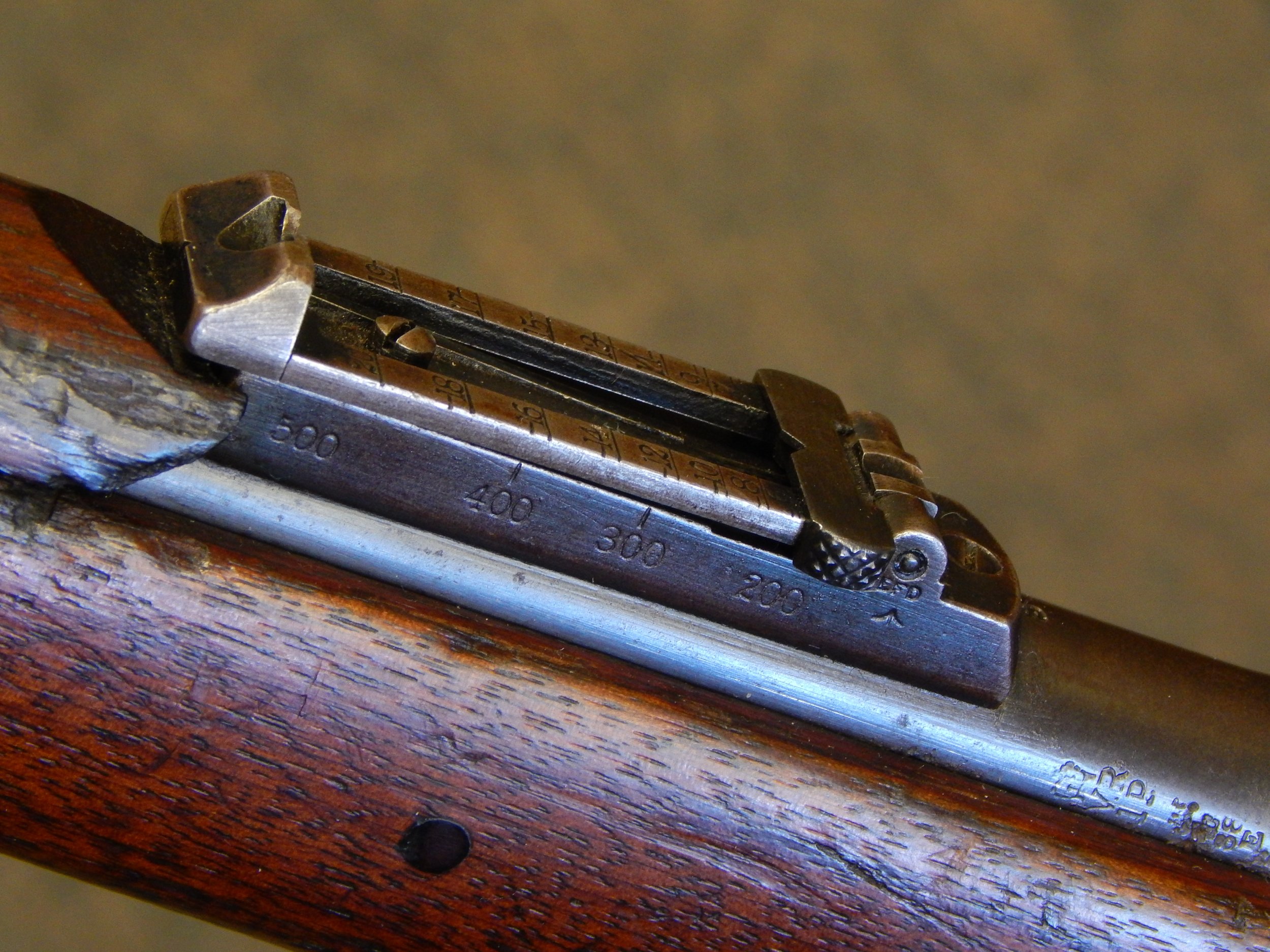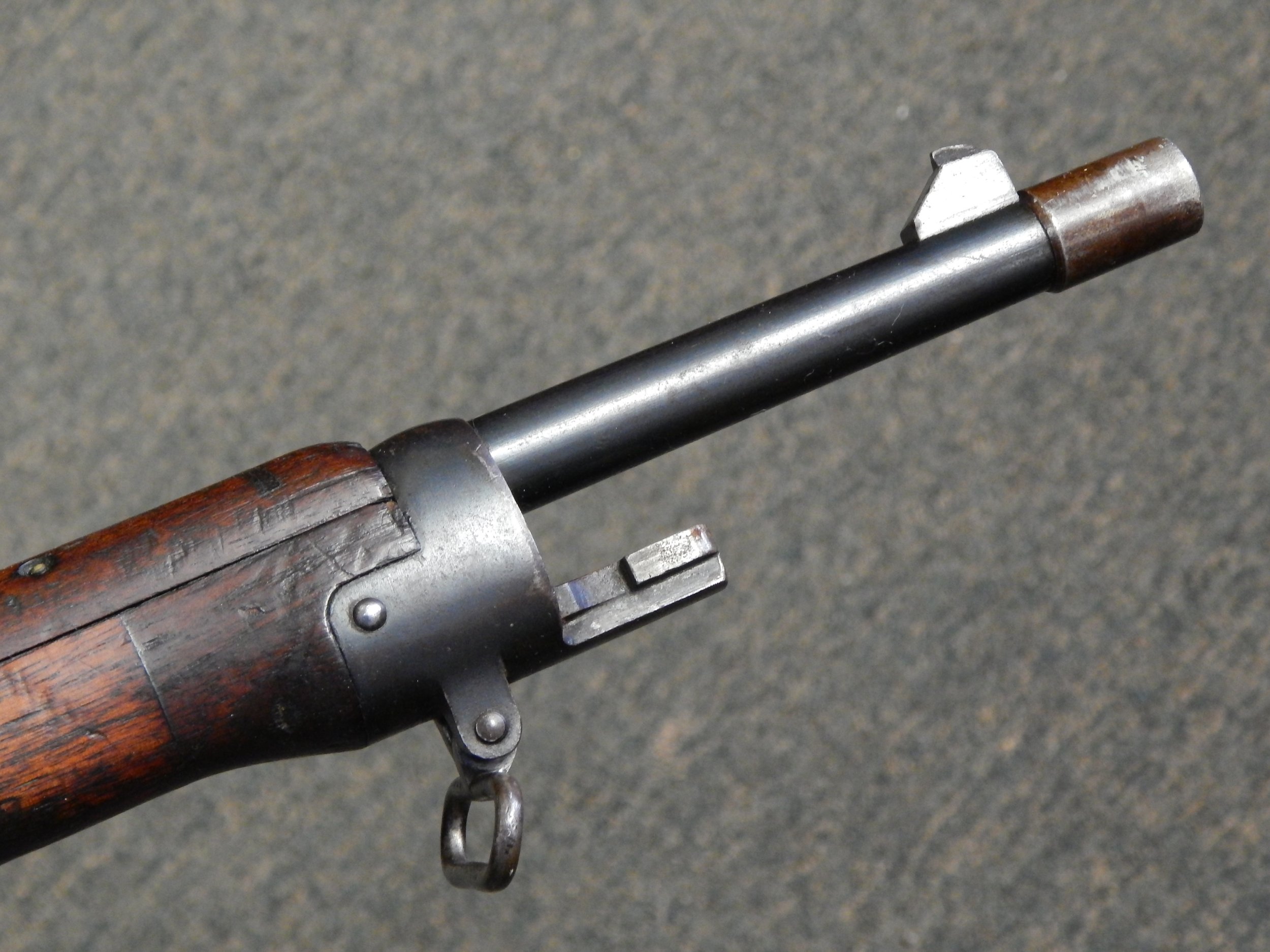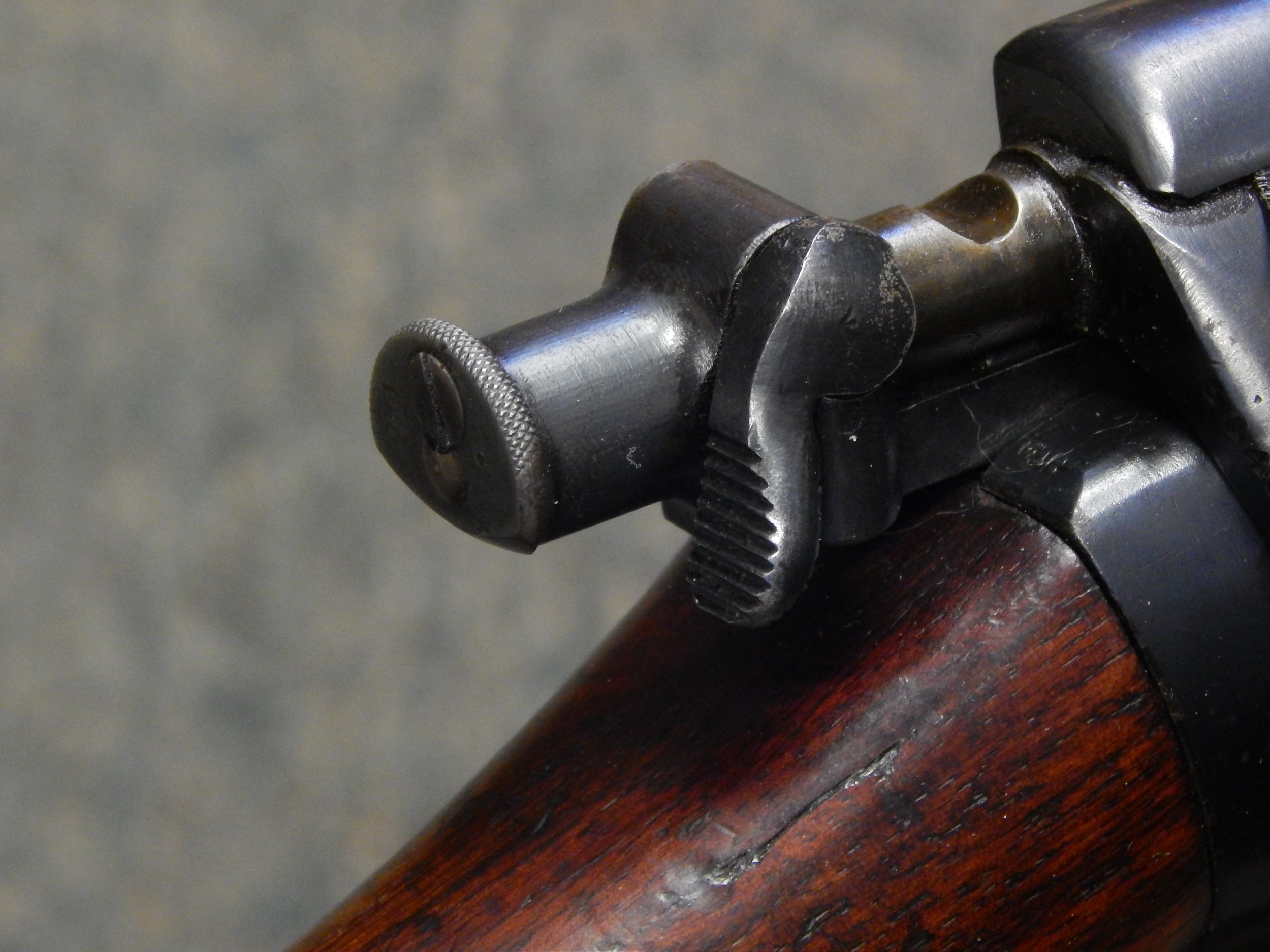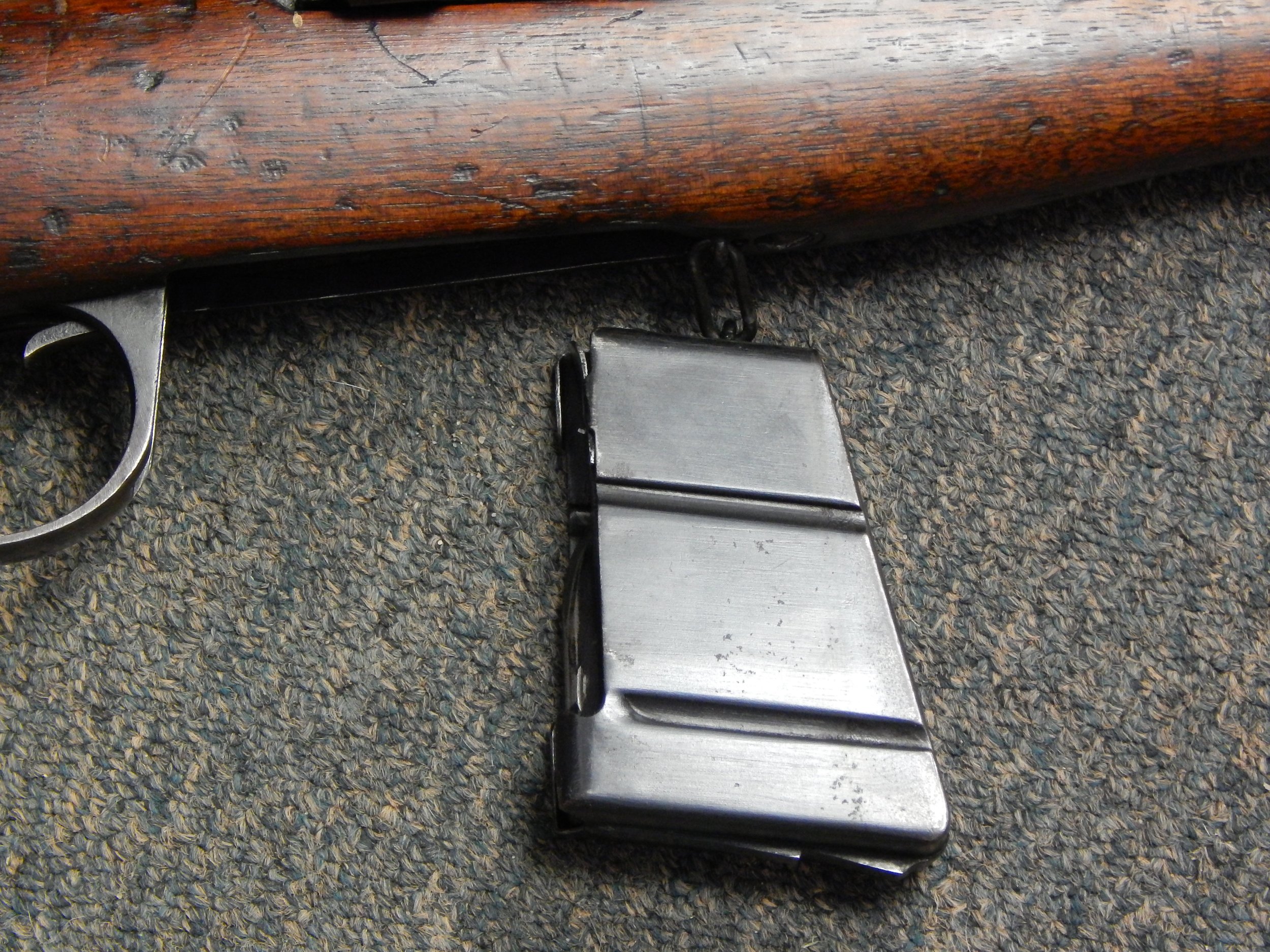Lee Enfield RIC Carbine
After the British Army upgraded its weapons to the new MkIII SMLE design, the now surplus Lee Enfield carbines would find their way into the hands of the Royal Irish Constabulary, after some slight modifications.
The History
During the period of British rule in Ireland several attempts were made to establish a police force for the island, and in the 1820s the Royal Irish Constabulary was founded with this goal in mind. Armed and organized as a semi-military gendarmerie, the RIC would serve various rural police duties as well as being employed against the growing separatist movement as the nineteenth century progressed, and by 1900 had evolved into a force of both mounted and dismounted units, clad in green uniforms similar to those of the British Army’s rifle brigades.
The rear sight, ramped from 200 to 500 yards, and with the ladder extending to a typically optimistic 2,000 yards
Despite this, the RIC was at the time armed with a cariety of older black powder arms, and it was seen that an update to the newer Lee Enfield smokeless powder repeater was necessary. With the Army switching from the MkI rifles and carbines to the new Short, Magazine, Lee Enfield (SMLE), an opportunity was siezed to procure the now surplus MkI Lee Enfield and Lee Metford (differentiated by the earlier Metford’s rifling) carbines for use.
The muzzle end of the carbine, with the splice for the bayonet lug visible on the stock, as well as the added collar forward of the front sight
The carbines were thus transferred to the RIC, and although this was done free of charge, the modifications specified by the Constabulary (mostly involving their requirement for a bayonet, which the cavalry carbines lacked provision for) had to be done at their own expense. The famed Birmingham Small Arms Company (BSA) performed the required work, and issue of the new carbines began in 1904, with an eventual total of approximately 11,000 produced and issued.
The action, with the characteristic dust cover and bolt mounted safety of the MkI Lee Enfield visible. Also apparent is the flattened bolt handle and shortened magazine of the early carbines
First issued to Constables in the Dublin area starting in March of 1904, and by the time of the Great War in 1914 had become the standard longarm in service with the RIC. The introduction of the new carbine coincided with an ever-ncreasing rise of tensions within Ireland, as the growing Home Rule Movement sought to assert independence from the Crown and began to arm itself, and loyalist militias began to form in opposition to them. Despite an apparent detente when the First World War began, an organized uprising began in Dublin on 24 April, 1916, coming to be known as the Easter Rising.
The distinctive cocking piece of the early Lee Enfields and Lee Metfords
This would spread to other areas of Ireland before it was put down five days later, with the RIC joined by regular British Army forces, but this did not spell the end of the conflicts on the Emerald Isle. With the end of the Great War a general election resulted in the nationalist Sinn Fein taking a majority and declaring independence, leaving the RIC to take on counter-insurgency roles as the new Irish Republican Army (IRA) engaged in large scale armed rebellion across the country. The deteriorating situation, as well as the influz of newer SMLE rifles after the war in Europe, led to the end of the RIC Carbine in service, as the Constabulary was expanded and further militarized, using the standard Army-issue short rifles. By late 1919 the carbines were in the process of retirement, as the RIC itself was forced to abandon large areas of the countryside and concentrate power in the urban centers. Two years later, with Ireland now independent, the RIC was dissolved.
The markings on the butt socket, identifying this as originally a Lee Enfield Carbine, MkI, made at Enfield in 1899. Note the “VR”, signifying Queen Victoria
The Design
The RIC Carbine is based on the cavalry model of the original British Lee Metford and Lee Enfield rifles, and as such features a short, 21 inch barrel and a shortened magazine with a capacity of six cartridges. As an early Lee, it lacks provision for a charger clip, requiring rounds to be loaded singly into the weapon, making the use of the magazine cutoff far more practical for most engagements. The bolt is also of the earlier style, with an integrated dust cover as well as a larger cocing piece with the safety mounted to it, rather than on the receiver as on the SMLE. The only functional difference between the Enfield and Metford derived RIC Carbines is the lack of a inset sling mounting bar on the side of the stock on the Enfields, which was present on the older Metfords as a remnant of their military use.
The marker disc on the butt, identifying this carbine as being accepted by the RIC in June of 1904, assigned the number 4,303. The cartouche signifies its conversion by BSA in 1904
Modifications for the RIC consisted of the removal of the end of the stock, which had originally gone to the muzzle and lacked a bayonet lug. A piece of a full length rifle stock was then spliced to the end, complete with its bayonet lug, while a collar was placed around the muzzle to fit the muzzle ring of the standard Pattern 1888 bayonet.
The shortened six round magazine, hanging from its chain beneath the rifle
This Example
The RIC Carbine in the author’s collection was originally a Lee Enfield Carbine manufactured in 1899 by the Royal Small Arms Factory at Enfield. It was converted in the initial batch by Birmingham Small Arms in 1904 and issued to the RIC in June of that year. It is in excellent overall condition both in its metal and wood components.
The action as viewed from above, with the magazine cutoff pulled out to engage the magazine. Also note the lack of a charger guide
Opinions
The RIC Carbine is an extremely handy little rifle, and is notably very slim. This makes for a comfortable shooter, which the author actually feels is superior in shooting characteristics to the later, more famous No5 Mk1 “Jungle Carbine”. The lack of charer loading and the six round capacity are a slight handicap, but in general this is an excellent little rifle that is a joy to shoot.
RIC Constables armed with their carbines outside of a shop in Cork, 1921
Observed Values and Frequency
Updated: February, 2024
AVERAGE VALUE (USD): $1,500 - $2,000
FREQUENCY: Very Rare
COLLECTOR’S NOTES: All correct RIC Carbines should be BSA conversions










